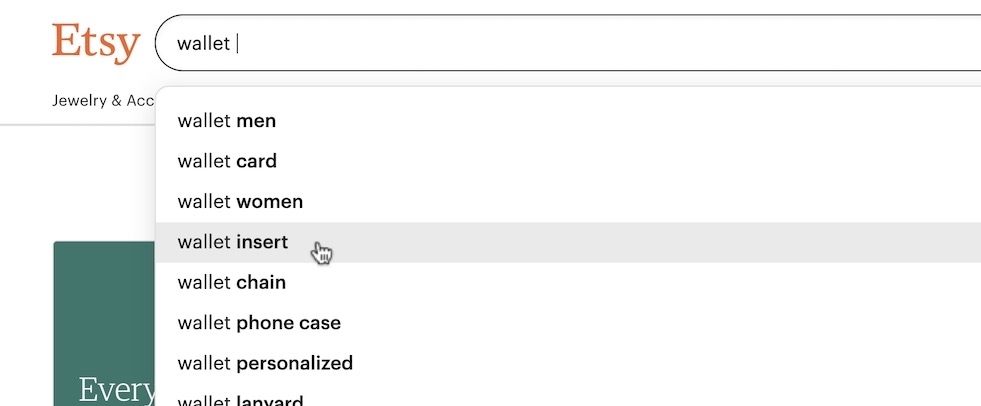Throughout the year, seasonal marketing campaigns can be a great way to engage your audience and achieve higher revenue for your products. There’s no time this rings more true than during the Christmas season. On average, retailers count on approximately 20% of their annual sales to take place in November and December. If you want to make the most of the holiday season and increase traffic in both your physical and online stores, you’ll need a strong Christmas marketing strategy — and we can help.
Table of Contents
- > Why a Christmas marketing strategy is critical for retailers
- > The components of a 360-degree Christmas marketing strategy in retail
- > Step #1: Set SMART Goals for your Christmas marketing strategy
- > Step #2: Define & study your target group
- > Step #3: Grab some inspiration by searching for holiday marketing best practices
- > Step #4: Study carefully any insights you can find about the holiday season
- > Step #5: Find a creative (and coherent) concept
- > Step #6: Go omnichannel by designing multiple communication channels
- > Step #7: Evaluate assets you already have
- > Step #8: Test-drive the searchability of your website
- > Step #9: Showcase products in terms of their Christmas giftability
- > Step #10: Limit the number of products you show at a time
- > Step #12: Consider a “12 Days of Christmas” marketing strategy
- > Step #13: Decorate your store for the holidays
- > Step #14: Update your website’s looks for the holiday season
- > Step #15: Customize your packaging for the season and gift branded merch
- > Step #16: Use email marketing, it never gets old
- > Step #17: Prepare for Black Friday & Cyber Monday
- > Step #18: Add a holiday charity campaign to your Christmas marketing plan
- > Step #19: Consider collaborating with another retailer
- > Step #20: Promote alternative financing and delivery options for your customers
- > Step #21: Decide how to market to last-minute holiday shoppers
- > Step #22: Marketing directly after Christmas
- > Step #23: Do not forget to monitor your Christmas marketing strategy
- > Go omnichannel and celebrate this holiday as you should
Why a solid Christmas marketing strategy is critical for retailers
The goal of a strong holiday marketing strategy is to engage your audience, optimize sales, and increase brand awareness. Depending on how well you market yourself, you can position your brand as the go-to place for all their holiday shopping — which can in turn drive more sales. And if people choose to buy and gift your products during the Christmas season, you have the potential to make an impression on new consumers. This means that your 2023 holiday marketing strategy for Christmas can increase more than just your holiday sales. It can also help you gain greater exposure and boost sales well after the holiday season is over.
The components of a 360-degree Christmas marketing strategy in retail
A 360-degree holiday marketing strategy uses all available materials — from online to offline options — to reach a target audience and get them to take action. Let’s take a look at the steps you need to take to develop a 360-degree Christmas marketing strategy to work for your brand.
Step #1: Set SMART Goals for your Christmas marketing strategy

Before you get started with your holiday marketing campaign, you need to know what your goal is for the holiday season. For example, depending on your metrics, you may be looking to increase your revenue compared to last year, reach your quarterly sales goals, or drive more traffic to your website. Despite the final results, having your goals clearly stated will help you develop a Christmas marketing strategy that targets those goals specifically.
For this, we recommend SMART goals. This goal-setting acronym stands for:
- S: Specific
- M: Measurable
- A: Attainable
- R: Realistic
- T: Timely
Setting specific, time-sensitive goals helps you focus your energy and have a clear barometer with which to measure your goals. For example, you could set a goal that you want your November and December sales to equal one-quarter of your yearly sales by the end of the 2023 holiday marketing season.
Once you reach the finish line, your SMART goals should make it easy to measure the success of your holiday marketing strategy. It can also help you assess your strengths and weaknesses, plan for the future, and note which strategies were the most effective. You can then use those results to inform future campaign strategies.
Step #2: Define & study your target group

Before you get involved in developing your Christmas marketing strategy, you want to ensure that your holiday strategy will relate well to your audience. To do this, you should first create a profile of your target and have a clear grasp of the buyer persona you want to attract. Once you have a profile created, you can begin to study holiday shopping trends for customers and adjust your Christmas marketing strategy accordingly. Studying your target group ahead of time allows you to identify which holiday strategies need to be implemented for that specific persona and whether you need to modify your plan based on your findings.
Step #3: Grab some inspiration by searching for holiday marketing best practices

Before you come up with a concept for your holiday marketing, you want to ensure you have a handle on marketing best practices. Develop a list of things you want to keep in mind when coming up with your marketing strategy, from email subject lines reminiscent of fairy tales to critical holiday marketing strategies worth keeping in your back pocket. The goal is to work on a Christmas marketing strategy that will engage your audience and get them into the sales funnel.
Step #4: Study carefully any insights you can find about the holiday season

Before starting to take any action, you should always begin by checking the most important Christmas statistics that pertain to your industry. For example, how did the Christmas sales go last year, did we have an increase or decrease? How consumer behavior has changed regarding the holiday season, after COVID-19? What is the expected Christmas retail revenue in your country? By acquiring this kind of knowledge you will create a more efficient Christmas marketing strategy: you will be able to estimate your inventory needs to the point, compute your advertising budget more accurately, and even more.
Step #5: Find a creative (and coherent) concept
Once you know your goals for the holiday season and have a handful of best practices and holiday marketing ideas, it’s time to develop your holiday marketing concept. Whether your concept is a color scheme, theme, holiday slogan, or combination of all three, you want to make sure the concept ties all your marketing efforts together.
A good holiday marketing concept should provide a direction for all your marketing efforts throughout the season. The perfect concept should be meaningful to your target audience, whether that means having a classy, simplistic color scheme for a minimalist audience or a larger message you want to communicate to appeal to a niche audience. If you are looking for a sprinkle of inspiration you can always check out some of the best Christmas campaigns by big brands and follow their paradigm.
Step #6: Go omnichannel by designing multiple communication channels

Customers interact with your brand in multiple ways. Today’s search funnel is more chaotic than ever. A customer’s journey can consist of reading about a product in an email, researching it on their desktop, and then showing it to their spouse on their cell phone before eventually buying it. The more channels you have available to advertise and communicate on — and the better your omnichannel advertising strategy — the more successful you will be this holiday season.
Moreover, remember that specific segmented audiences respond better in different channels. Associating the correct channel with the correct target group is a meticulous data-driven process, so implementing thorough research tools is crucial.
Tip: Prefer using a customer engagement platform with a drag-and-drop omnichannel automation builder like ContactPigeon’s. It will save you tons of time.
Step #7: Evaluate assets you already have

Holiday marketing can get expensive, fast. That’s why you should evaluate the assets you already have to determine what can be repurposed to communicate your concept to customers. Content such as Christmas blog posts from previous years can be given a quick face-lift and some updated facts that respond to the latest trends of the new season. Evaluating assets you already have allows you to prioritize your funds for new marketing strategies while also saving time and resources.
So overall, don’t forget to audit previous years’ best performing:
- Products & product families
- Paid ads
- Social Media activity
- Collaborations with influencers
- Newsletter campaigns
- SMS/Whatsapp/Viber/WeChat campaigns
- Blog content
Step #8: Test-drive the searchability of your website

Broken links are frustrating to your shoppers no matter what season you’re in. But during the holiday marketing season, broken links or improperly-tagged search term items can mean the difference between making a sale and losing a potential customer completely. Be sure to do a quick audit of your website to make sure it runs smoothly and that all of the links work. You should also update your inventory’s search terms or tags and ensure your customers can easily find what they’re looking for. Last but not least, do not skip optimizing your search functionality; it has to be predictive, effective, and as engaging as it can.
Step #9: Showcase products in terms of their Christmas giftability

Success in the retail industry is all about showing how your products can fix your customers’ problems. And one of the biggest problems customers have during the Christmas season is deciding what to buy for those hard-to-shop-for family members and friends.
Creating gift guides during the holiday marketing season can help your customers more easily make decisions and commit to buying a product. You can do this by highlighting your products’ selling points through blog articles, social media posts, and advertisements. You can also follow the example of big brands like ASOS, Jacquemus & Palm Angels, and create dedicated categories for gifts on your website: this will highly increase the UX and contribute to a successful Christmas marketing strategy.

Step #10: Limit the number of products you show at a time

Did you know that customers who have too many choices are actually less likely to make a purchase than customers who have fewer options? That’s why, instead of sending out your entire holiday catalog, you’re better off creating targeted fliers, letters, and product collections with limited numbers of items showcased to your customers at a time, to avoid product cannibalization. You may also want to consider running cross-sell and upsell product recommendations campaigns, based on previous purchases or browsing history.
Step #11: Develop a Christmas marketing strategy to address inventory shortages

Inventory shortages in 2023 are a major concern for a lot of brands. Because you know to expect this problem, you can strategize the best way to address it. For example, you could advertise the last day customers need to order from you to receive their package by Christmas, hence communicating the time sensitivity that Christmas shopping has. You could also promote high-stock items over low-stock items in your sales and newsletters, or offer a printable coupon that last-minute shoppers can stick in gift boxes or stockings.
Step #12: Consider a “12 Days of Christmas” marketing strategy

One effective campaign is to do a “12 days of Christmas” sale on the days leading up to December 25. This entails highlighting and promoting a different product every day for 12 days. The countdown will help create a sense of urgency and make a consumer more likely to purchase your product. This tactic will also be a gem to your marketing strategy for Christmas for another reason, the SEO value: since you’ll be using a countdown with unique day-by-day sales, you will have returning visitors/customers on your website, hence you will increase the authority of your domain for the search engines and achieve higher rankings around the Christmas concept.
You can also choose to run the sale after the holiday, from December 25 through January 5. Continuing your holiday marketing during this period will allow you to capitalize on customers who are returning items or celebrating the holidays later. Twelve days of sales can also provide a way to highlight extra products that you have in stock and push those items out over products that are in short supply.
Step #13: Decorate your store for the holidays

You may assume customers have gone digital and no longer care about in-person store decorations, but that’s far from true. Many customers prefer to shop in-store for the holidays, especially when they don’t know exactly what they’re looking for. Decorating your physical store for the holidays can give customers a warm feeling, making them linger longer and helping them envision how your products would be received during the holiday season.
Step #14: Update your website’s looks for the holiday season
Your physical store isn’t the only thing that can be updated for the holiday season. Even e-commerce brands can decorate for the season as a form of holiday marketing. Consider updating your website with festive colors or putting a new holiday image on your Twitter and Facebook pages. Your overall digital presence should be cohesive and consistent, so a few updates across all your digital accounts can get people in the holiday spirit.
Step #15: Customize your packaging for the season and gift branded merch

Holiday-themed packaging can be an effective selling feature, especially if it can double as gift wrapping. You can also optimize your packaging by including branded merchandise inside. Not only will this help showcase your brand, but also it will elevate the customer’s impression of your company and potentially lead them to buy your product again. Plus, if the branded gift and presentation leave a strong impression on the recipient, they’ll be more likely to spread the word about your company and refer this offer to others: enhancing your brand’s word-of-mouth reputation is always a good tactic to use on your Christmas marketing plan and strategy in general.
Step #16: Use email marketing, it never gets old

Did you know that email marketing is behind 20 percent of website visits during the holiday season? Data have also shown that individuals who are led to a site from a promotional email, spend 138% more than other kinds of website visitors. So do not underestimate the power of a newsletter! Reminding your subscribers about your products and showcasing to them your amazing Christmas offers will add up to your Christmas marketing strategy.
Also, a personalized email for your repeating customers is a tactic that never loses: showing affection and that you take an interest in them, will unquestionably turn them into loyal customers. Just remember: to create loyal customers for your brand, do not limit your newsletter to offers/sales context. Send them also Merry Christmas/Happy New Year wishes to let them know that you truly care.
Step #17: Prepare for Black Friday & Cyber Monday

Capitalize on the Black Friday excitement, since it officially signals the beginning of the holiday shopping season. For most retailers, the busiest shopping period of the year runs from Black Friday through Cyber Monday and extends all the way to Christmas. Running Black Friday and Cyber Monday sales is a solid strategy for most brands.
Online, you can be prepared by ensuring your website has the capacity to handle the influx of users and that your inventory is sufficient for your Christmas offers. Additionally, consider tweaking your digital channels, automations, and pop-ups to match the holiday spirit. In-store, preparing for the influx of customers is just as important, so make sure that your brick-and-mortar strategy is effective and keeps things running smoothly.
Tip: Grab some inspiration from the best Black Friday campaigns ever here
Step #18: Add a holiday charity campaign to your Christmas marketing plan

Customers are more likely to support brands that give back to the community, and the holidays provide a great opportunity to do this. During the season of giving, customers may even be willing to spend a little extra money to support those in need.
One option would be to donate a portion of profits made within a certain time frame to a local charity. You could also have a giving tree in one of your store locations, or host a “buy one, gift one” campaign where you donate an item to a family in need for each item purchased.
Step #19: Consider collaborating with another retailer

If your business sells a niche product, collaborating with another (non-competitive) retailer can allow both of your businesses to target a broader audience. Collaborating in this way allows both brands to benefit from their collective audience. Just ensure that the other brand embodies your positioning and your core brand message as well.
Step #20: Promote alternative financing and delivery options for your customers

For some families, the holidays can be stressful. When finances are tight, coming up with a way to make everyone happy without breaking the bank can feel like a Herculean task. You can make it easier for your customers by offering lenient payment plans. Just don’t forget to promote your alternative payment options early and often.
It’s also important to offer flexible delivery options. For example, allowing customers to buy items online and pick them up in the store can reduce foot traffic, lessen shipping costs, and decrease the chance of a customer returning an item. This is because customers are less likely to impulse buy items online since they have time to research the item before they buy.
Step #21: Decide how to market to last-minute holiday shoppers

Marketing to those specific shoppers who do all of their shopping on Christmas Eve is difficult. But if you get it right, you can meet the needs of a very real market. Even if you only have an online presence, you can still market to last-minute shoppers by offering things like printable e-gift cards, memberships, or subscription services that people can buy for family members. You can also offer printable coupons that showcase purchases and their arrival dates.
Step #22: Marketing directly after Christmas
Once the holiday season is over, it’s a good idea to have some sort of wrap-up marketing campaign before kicking the new year off. Initiate an email/social media campaign concluding the holiday season, or a season close-out sale offered to your loyal VIP customers and top spenders. Showing appreciation to your visitors at the end of the season can keep your Christmas marketing plan from coming to a crashing halt after Christmas day.
Step #23: Do not forget to monitor your Christmas marketing strategy

One of the most important steps every marketing strategy should have, is monitoring, not only by the end of its course but also throughout its implementation. After setting your short-term and long-term goals, you ought to use metrics to be able to calculate the success of your tactics.
For example [short-term goal]: how many users did they open your newsletter? If the open rate isn’t good enough you should probably come out with a more effective “Christmasy” subject line in the next one. By regularly monitoring your short-term goals, you will be able to learn from your mistakes and adjust your tactics accordingly for your marketing strategy for Christmas to succeed.
Monitoring your long-term goals will help you calculate the success of your Christmas marketing strategy and translate it into numbers. For example, what was your revenue from the Christmas season? Did your Christmas sales increase vs the previous year? Is your inventory over-filled with holiday (or not) items that you didn’t want to have in stock by the end of the holiday season? Measuring your long-term goals will help you plan an even more efficient Christmas marketing strategy for next year.
Next Step: Discover more useful Holiday Marketing resources
- The 30 Best Christmas campaigns we’ve ever seen
- 150+ Fairytale-ish Christmas Email Subject Lines for Holiday
- The Step By Step Holiday Email Marketing Checklist
- Everything You Need To Know About Holiday Email Marketing
- 24 Holiday Newsletter Ideas to Cheer Up the Season
- 56 Christmas Marketing Statistics to Know for This Holiday Season
Go omnichannel and celebrate this holiday as you should
Although Christmas marketing ideas for small businesses will look different than holiday marketing for massive global chains, every retailer can benefit from a tight, cohesive Christmas marketing strategy. The key is to offer an omnichannel marketing strategy and rely on all online and offline mediums to communicate with your target audience.
But to truly succeed this holiday season, you should carefully align both your online and offline presences, ensuring you communicate the same brand message to your customers regardless of their shopping preferences. ContactPigeon is one of only a few 360-degree omnichannel customer engagement platforms specifically built for the retail industry. We’re trusted by high-end, well-known brands all over the EU. Contact us today to book a consultation and get started on your Christmas marketing strategy.







